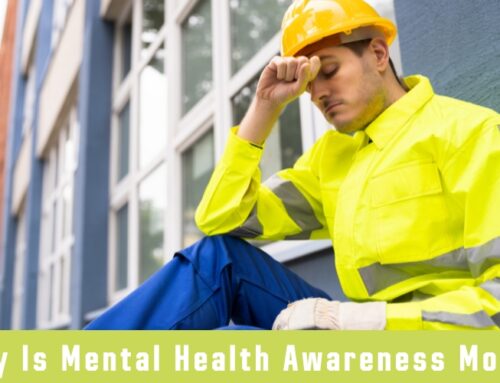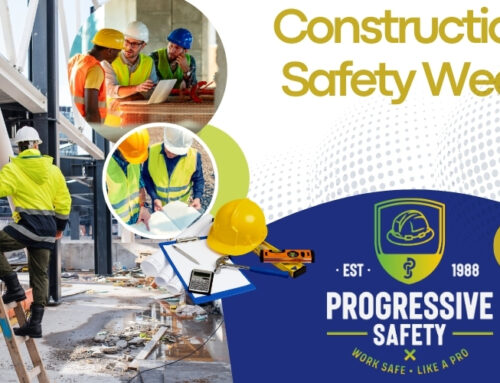As we wrap up National Safety Month, Week 4 focuses on wellness—a critical pillar of safety in both workplaces and personal lives. This week, we emphasize holistic approaches to safety, with wellness at the heart of keeping individuals safe and thriving. Let’s explore three key areas—fatigue, drug and alcohol abuse, and mental health—and how addressing them can foster safer, healthier environments.
Fatigue: The Silent Safety Hazard
Fatigue is more than feeling tired; it’s a state of physical or mental exhaustion that impairs performance and increases safety risks. In workplaces, fatigued employees are more likely to make errors, leading to accidents or injuries. Studies show fatigue can impair reaction times as much as alcohol.
Why It Matters
- Workplace Impact: Fatigue is linked to reduced focus, slower decision-making, and increased risk of slips, trips, and falls—a key focus of Week 4.
- Personal Impact: Chronic fatigue affects sleep quality, mood, and overall health, increasing stress and burnout risks.
Actionable Steps
- For Employers:
- Implement shift schedules that allow adequate rest (e.g., avoid back-to-back long shifts).
- Promote a culture of breaks, encouraging short naps or rest periods during long shifts.
- Provide fatigue management training to recognize and address fatigue symptoms.
- For Individuals:
- Prioritize 7–9 hours of sleep nightly.
- Practice good sleep hygiene: limit screen time before bed, maintain a consistent sleep schedule, and create a restful environment.
- Consult the Employers’ Employee Assistance Program (EAP) for fatigue management strategies.
Drug and Alcohol Abuse: Breaking the Cycle
Substance abuse, including drugs and alcohol, poses significant risks to safety. In the workplace, impaired individuals are more likely to cause accidents, from operating machinery unsafely to contributing to falls or collisions. Addressing substance abuse is critical to protecting employees and communities.
Why It Matters
- Workplace Risks: The Occupational Safety and Health Administration (OSHA) notes that substance abuse contributes to 65% of on-the-job accidents.
- Personal Toll: Addiction affects physical health, relationships, and mental well-being, creating a vicious cycle of dependency and risk.
Actionable Steps
- For Employers:
- Develop clear substance-free workplace policies and communicate them regularly.
- Offer support through counseling services or local resources for employees struggling with addiction.
- Educate teams on the dangers of impairment through safety talks or webinars.
- For Individuals:
- Seek help through hotlines (e.g., SAMHSA’s National Helpline at 1-800-662-HELP) or local support groups.
- Avoid using alcohol or drugs as coping mechanisms; instead, explore healthier stress-relief methods like exercise or meditation.
- Raise awareness about substance abuse prevention using social media with hashtags like #NSM and #KeepEachOtherSafe.
Mental Health: Building Resilience
Mental health is foundational to safety and wellness. Poor mental health—whether due to stress, anxiety, or depression—can reduce focus, increase distractibility, and heighten the risk of accidents. Creating supportive environments is key to addressing mental health challenges.
Why It Matters
- Workplace Connection: Mental health challenges contribute to absenteeism, reduced productivity, and higher injury rates.
- Personal Impact: Untreated mental health issues can lead to isolation, substance abuse, or chronic fatigue, compounding safety risks.
Actionable Steps
- For Employers:
- Foster a stigma-free culture by offering mental health resources, such as counseling or stress management workshops.
- Train managers to recognize signs of mental distress and guide employees to the Employers’ Employee Assistance Program (EAP) for support.
- Encourage participation in campaigns like “Go Green for Safety” to promote mental health awareness.
- For Individuals:
- Practice self-care through mindfulness, journaling, or physical activity to manage stress.
- Reach out to mental health professionals or use resources like the National Alliance on Mental Illness (NAMI) for support.
- Learn strategies for maintaining mental wellness through available tip sheets and guides.
Tying It All Together
Fatigue, drug and alcohol abuse, and mental health are interconnected challenges that impact safety at every level. By leveraging resources like the Employers’ EAP for key support and taking proactive steps, we create safer workplaces and communities, ensuring everyone can thrive. This National Safety Month, let’s commit to prioritizing wellness—because safety starts with us.




